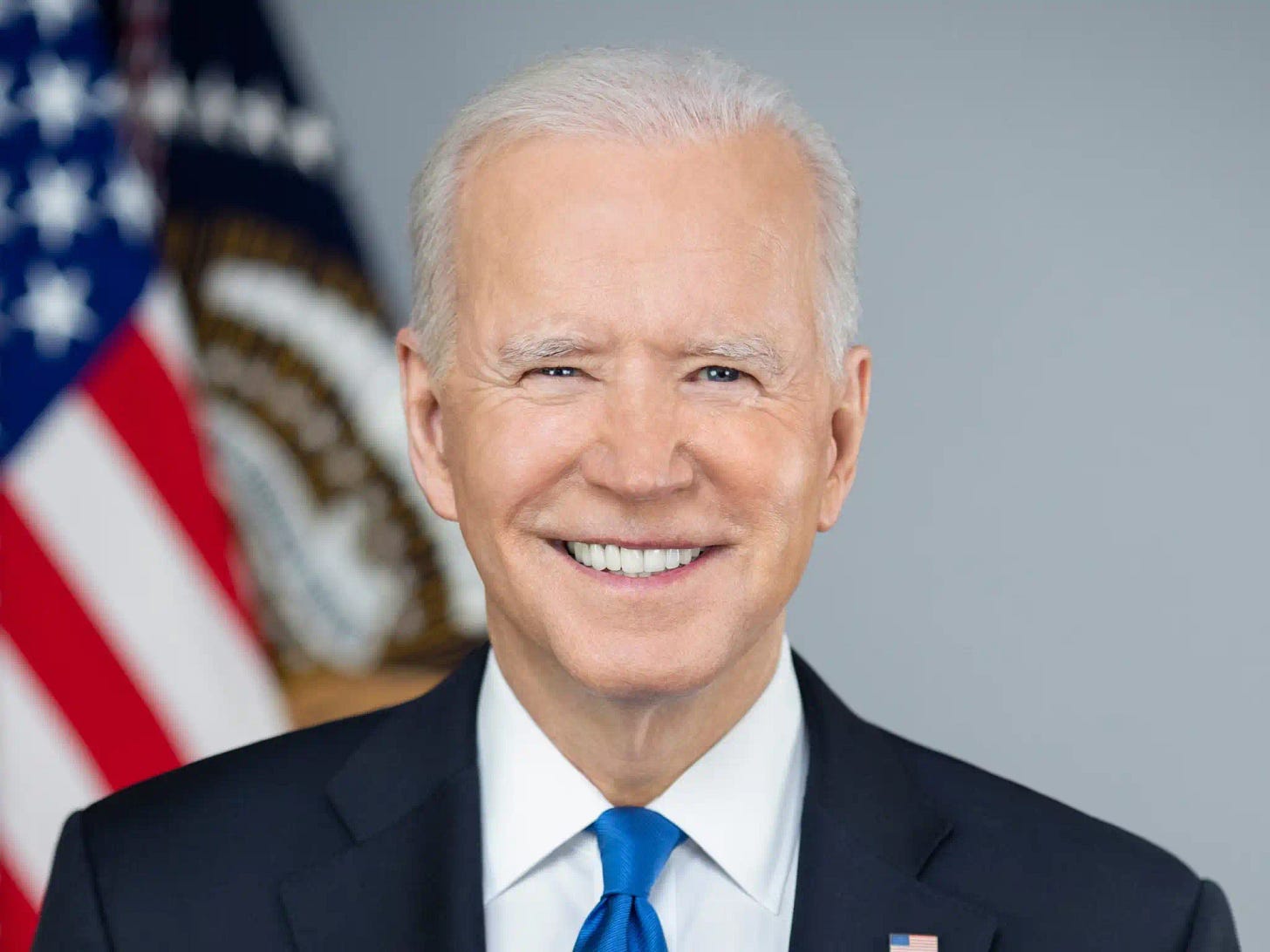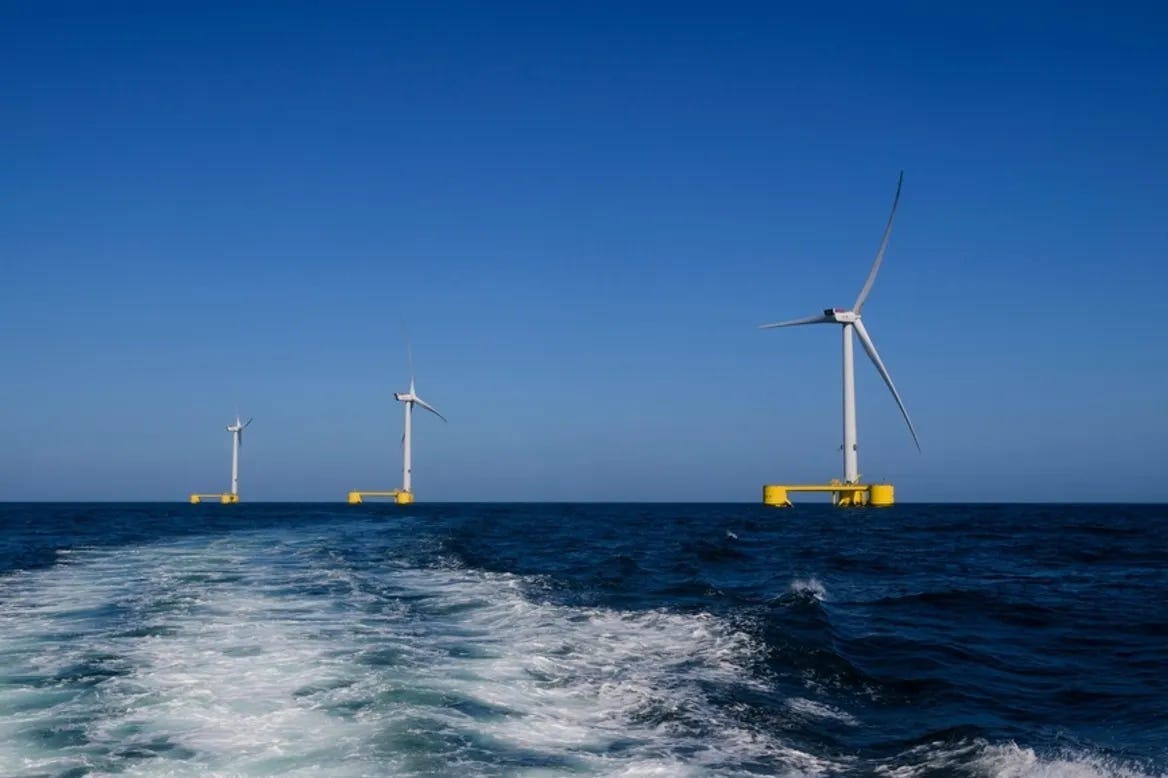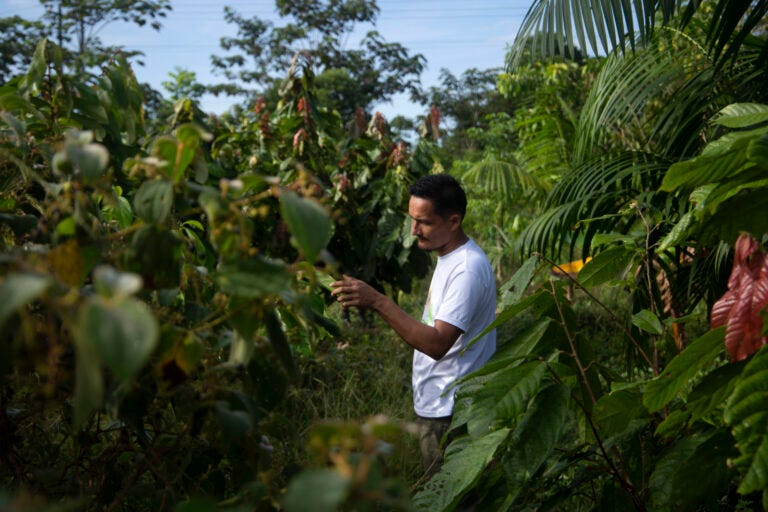The Weekly Anthropocene, November 22 2023
The world's first sperm whale reserve, a joint statement on climate from the U.S. and China, the Biden Administration keeps on decarbonizing, former fighters foster forestry in Colombia, and more!
Dominica
The Caribbean island nation of Dominica1 has announced the designation of the world’s first sperm whale reserve, covering 788 km2 of ocean with new restrictions on vessel traffic to prevent collisions. That’s a relatively small area (almost exactly the same size as New York City), but it’s a crucial feeding and calf-nursing site for the local “Eastern Caribbean Clan” sperm whale population, so protecting it has outsized impact. This is excellent for many reasons. Sperm whales are highly intelligent and social animals (with the largest brains in the world!) that deserve safe havens in their own right, and they also, like other cetaceans, play a surprisingly large role in fighting climate change by fertilizing phytoplankton with their feces. Great news!
“The 200 or so sperm whales that call our sea home are prized citizens of Dominica. Their ancestors likely inhabited Dominica before humans arrived. We want to ensure these majestic and highly intelligent animals are safe from harm and continue keeping our waters and our climate healthy.”
-Roosevelt Skerrit, Prime Minister of Dominica
U.S. & China

Amid a nascent moment of detente in the long-term Sino-American geopolitical rivalry, the governments of the U.S. and China issued a joint statement reaffirming their commitment to working together to address climate change. This is a particularly good sign ahead of the upcoming COP28 U.N. climate talks (set to start in Dubai on November 30th, 2023). Notable quotes include (text in bold italics added by this newsletter):
“Both countries support the G20 Leaders Declaration to pursue efforts to triple renewable energy capacity globally by 2030 and intend to sufficiently accelerate renewable energy deployment in their respective economies through 2030 from 2020 levels so as to accelerate the substitution for coal, oil and gas generation, and thereby anticipate post-peaking meaningful absolute power sector emission reduction, in this critical decade of the 2020s.” This one’s a big deal! As the New York Times noted, this appears to be among the first times China has verbally committed to emissions reduction (probably because it’s now on track to achieve it). This kind of powerful pro-energy transition statement is sayable now that both the U.S. and China have already committed to building lots of renewables. A quote like this emerging from a U.S.-China discussion would have utterly shocked the world in, say, 2010-we’ve come a long way!
“Both sides agree to restart the U.S.-China Energy Efficiency Forum to deepen policy exchanges on energy-saving and carbon-reducing solutions in key areas including industry, buildings, transportation, and equipment.” A bit of “removing sand in the gears” that will help good ideas spread faster.
“The United States and China are determined to end plastic pollution and will work together and with others to develop an international legally binding instrument on plastic pollution, including the marine environment.” A fillip to ongoing plastic pollution treaty talks.
“Both sides commit to advance efforts to halt and reverse forest loss by 2030, including by fully implementing through regulation and policy, and effectively enforcing, their respective laws on banning illegal imports.” Taken in conjunction with the new EU anti-deforestation laws, this could have big ripple effects if followed through!
All this is just a statement of good intent, not a legally binding new treaty or anything, but it’s great that the U.S. and China are thinking and talking like this!
United States
The Biden Administration recently announced $40.8 million in Bipartisan Infrastructure Law funding for centers to train students and workers in clean energy job skills…
…and $169 million in Defense Production Act funds2 for nine projects to accelerate domestic heat pump manufacturing…
…and $3.5 billion (i.e. 350,000 million) in BIL funding to support domestic battery manufacturing…
…and a whole suite of adaptation funding measures, including $300 million for flood resilience projects, $100 million for drought resilience projects, and $3.9 billion for grid modernization!
These kind of steady, sensible investments just keep plugging away at solving wicked problems like climate change and air pollution step by step. They’re barely reported on, but they’re really excellent!
42,000 people have signed up so far for the Biden Administration’s pioneering American Climate Corps (announced in September 2023) which will train members for jobs in climate action fields from wildfire prevention to wind turbine installation. The first cohort will select 20,000 applicants, with more likely to follow. As the similar 1930s CCC, 1960s Peace Corps, and 1990s AmeriCorps created lasting legacies of motivated and experienced people devoted to work on vital issues, the 2020s ACC looks set to pay dividends for decades to come!
The Department of Energy published a formal proposal to grant categorical exclusions from the National Environmental Policy Act (NEPA) for certain solar, transmission line, and energy storage projects on federal land. This is really esoteric, but also really important, since renewables opponents often use NEPA’s lengthy environmental review processes to hijack and slow-walk vital clean energy development. Currently, lots of fossil fuel projects get categorical exclusions from NEPA while renewables projects often don’t, even though they’re really clearly better for the world. The new DOE proposal would level the playing field, and help remove one of the remaining barriers slowing down America’s great clean energy boom!
New Treasury Department guidance on the details of how the Inflation Reduction Act tweaks a particular tax credit was welcomed as a boon for the U.S. offshore wind industry.
U.S. electric vehicle sales continue to boom, as more EVs were sold in America in the first nine months of 2023 than in all of 2022! EVs made up 8% of new car sales in the third quarter of 2023, up from 5% (a crucial tipping point for EV adoption) in late 2023. In addition to helping in the global fight against climate change, EVs bring vital public health benefits3: an MIT study calculated that air pollution from fossil fuel-burning vehicles causes 53,000 premature deaths in America each year. The rise and rise of EVs is spectacular news!
Oregon just got its first zero-emissions battery-powered garbage truck, one of at least 48 across the U.S. Thanks to Inflation Reduction Act tax credits, a recent white paper predicts that by 2035, 70 to 77% of new garbage trucks sold in America will be zero-emissions models!
A non-fossil fuel burning 75-passenger ferry, the Sea Change, is set to launch in San Francisco in 2024, powered by both hydrogen fuel cells and a lithium-ion battery.
The Gila River Indian Community in Arizona is building America’s first solar canal, a normal irrigation canal with a solar canopy over it to generate power while reducing water loss to evaporation. The first phase of the project should be complete in 2025!
Portugal
For six straight days from October 31 to November 6, 2023, clean energy sources in Portugal produced more than enough renewable electricity to meet all of the 10 million-person Iberian nation’s electricity needs. Even more impressively, for a 131-hour stretch (more than five days) beginning on October 31, Portugal used only renewable electricity, with no fossil fuels being burned at all anywhere on the Portuguese grid, and for 95 of those hours was still able to export clean electricity to Spain!
For context, Portugal was one of the early wind power developers in the 1990s (and is now replacing old turbines in prime sites with newer, more efficient turbines), already closed its last coal plant in 2022, and plans to close its remaining gas plants (now being used less and less) by 2040. Great work!
Saudi Arabia
The Arabian leopard (Panthera pardus nimr) is a critically endangered subspecies of leopard, whose numbers have plummeted to the brink of extinction in recent decades. Now, the Saudi government’s Royal Commission for AlUla4 has reported that their Arabian leopard conservation breeding programme (started in 2019 as a partnership with renowned cat conservation NGO Panthera) is notching successes, with 7 Arabian leopard cubs born in 2023 so far. The program’s long-term goal is to rewild leopards into the AlUla mountains, which the kingdom is promoting as a tourism destination. There are now 27 Arabian leopards at the Taif breeding centre, up from 14 in 2020, with an unknown number (estimated to be around 150, with research to find them ongoing) in the wild. With sustained conservation attention, the subspecies now has a strong shot at survival!
Japan
The Japan Science and Technology Agency’s Moonshot R&D Program is funding a fascinating effort to develop weather control technologies (described as “incredibly ambitious” and “very difficult”) with the aim of shielding the archipelago nation from extreme weather events. Research is in very early stages, with advanced computer modeling5 and simulations raising several possible methods of preventing the formation of large cumulonimbus stormclouds. These might include “building dams in the air,” with early brainstorming positing giant kite-lifted curtains that would block humid air from rising over the ocean, backed up by giant wind turbines to manipulate updrafts. The researchers hope to begin building parts for some of these devices by 2026, conduct some small-scale tests by 2031 and deploy a large-scale experiment by 2040.
This may or may not end up working, but it’s great that we’re exploring this avenue of research! If it pays off, it could be really useful around the world as climate change continues to roil the atmosphere. Maybe by the 2050s, major cities around the world will be able to deploy “storm dams” in times of need!
Colombia
For decades, Colombia was torn by a civil war between the central government and the FARC rebel group. The fighting finally died down with a U.S.-brokered peace agreement in 2016, allowing thousands of ex-FARC fighters to reintegrate into Colombian society. Now, many of them are turning their skills to ecosystem restoration. The Comuccom ecosystem restoration cooperative near the Ecuadorean border is a particular highlight, home to 24 ex-FARC members and their families, 250,000 seedlings from 50 Amazonian tree species (some endangered) and 65 hives of Melipona stingless bees. Comuccom plans to plant 1 million native trees by 2031 to help resist deforestation in the Colombian Amazon and provide habitat corridors for species ranging from jaguars to hummingbirds.
“In 2017, after the signing of peace agreements, our cooperative was born to involve local associations as protagonists in restoring nature for future generations and active peacebuilders. We want to show that we can leave behind a culture of conflict and move toward solidarity and peace in our territory.”
-Duberney López Martinéz, former FARC child soldier and current president of Comuccom
Not the same country as the similarly named Dominican Republic, which shares the much larger island of Hispaniola with Haiti.
Saudi Arabia Disclaimer: Saudi Arabia is a brutal absolute monarchy that does many horrible things, and the AlUla leopard conservation efforts can be seen as part of the kingdom’s broader efforts to soften its image in recent years, implicitly trying to associate your “warm and fuzzy” feeling of seeing baby leopard cub with your broader perception of Saudi Arabia. As when we report on clean energy progress in China, this newsletter feels it’s valuable to share genuine good news even when it’s happening under the auspices of terrible governments—but we’re trying not to unintentionally help authoritarians look good.









